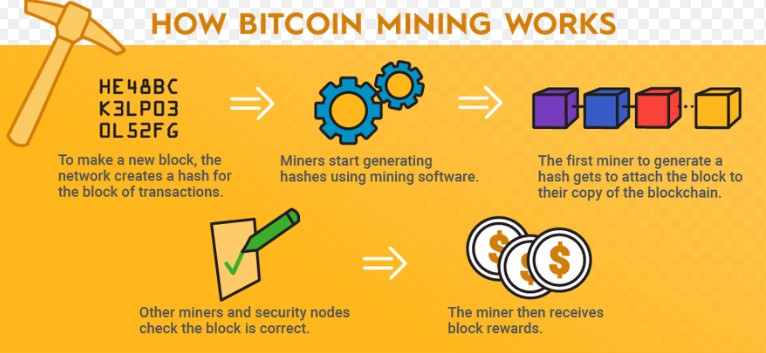Bitcoin mining is the process of adding transaction records to the public ledger of Bitcoin transactions known as the blockchain. This process involves solving complex mathematical algorithms to validate and confirm transactions on the network. In return for this validation work, miners receive newly minted bitcoins as a reward. In this beginner’s guide, we’ll explore how to mine Bitcoin and get started in the world of cryptocurrency mining.
Step 1: Choose Your Mining Hardware
The first step in Bitcoin mining is choosing the right hardware. Bitcoin mining hardware includes specialized computers known as ASICs (Application-Specific Integrated Circuits) that are designed specifically for mining Bitcoin. These machines are more efficient and powerful than traditional computers or graphics cards.
Ste犀利士
p 2: Choose a Mining Pool
Mining Bitcoin on your own can be difficult and time-consuming. To increase your chances of earning mining rewards, it’s recommended to join a mining pool. Mining pools are groups of miners who combine their computing power to mine Bitcoin together. This increases the chances o壯陽藥
f finding a block and earning a reward, which is then distributed among the members of the pool.
Step 3: Install Mining Software
Once you have your mining hardware and have joined a mining pool, the next step is to install mining software. Mining software is the program that connects your mining hardware to the mining pool and the Bitcoin network. Some popular mining software options include CGMiner, BFGMiner, and EasyMiner.
Step 4: Configure Your Mining Settings
After installing mining software, you’ll need to configure your mining settings. This includes setting up your mining pool account and entering your mining hardware specifications. It’s important to carefully follow the instructions provided by your mining software and mining pool to ensure optimal performance and efficiency.
Step 5: Start Mining
Once your mining hardware, mining pool, mining software, and settings are all configured, you’re ready to start mining Bitcoin. Your mining software will begin solving mathematical algorithms to validate and confirm transactions on the Bitcoin network. As a miner, you’ll earn newly minted bitcoins as a reward for this validation work.
Tips for Successful Bitcoin Mining
- Choose high-quality mining hardware from reputable manufacturers to ensure efficiency and durability.
- Join a mining pool to increase your chances of earning mining rewards.
- Stay up-to-date on changes in mining difficulty and market trends to adjust your mining strategy accordingly.
- Keep your mining hardware and software up-to-date with the latest updates and patches.
- Minimize your energy costs by using energy-efficient mining hardware and minimizing downtime.
Conclusion
Bitcoin mining can be a profitable way to earn passive income, but it requires significant investment in hardware and energy costs. Choosing high-quality mining hardware, joining a mining pool, installing mining software, configuring your mining settings, and staying up-to-date on market trends and mining difficulty are all essential for successful Bitcoin mining. It’s important to do your research and carefully consider the risks and rewards before investing in Bitcoin mining.
FAQs
- Can I mine Bitcoin using a regular computer or graphics card? Answer: No, Bitcoin mining requires specialized mining hardware known as ASICs.
- Is Bitcoin mining legal? Answer: The legality of Bitcoin mining varies by country and region. It’s important to consult local laws and regulations before investing in Bitcoin mining.
- What is mining difficulty? Answer: Mining difficulty is a measure of how difficult it is to mine Bitcoin. Higher mining difficulty can result in a lower chance of earning mining rewards.
- What are mining rewards? Answer: Mining rewards are the rewards earned by miners for verifying transactions and adding new blocks to the Bitcoin blockchain.
- How long does it take to mine one Bitcoin? Answer: The time it takes to mine one Bitcoin varies depending on mining difficulty, hardware performance, and energy costs. It can take anywhere from a few days to several months to mine one Bitcoin.
- Is Bitcoin mining profitable? Answer: Bitcoin mining can be profitable, but it depends on a variety of factors, including the mining difficulty, market value, and energy costs. It’s important to carefully calculate your potential profitability before investing in Bitcoin mining.
- Can I mine other cryptocurrencies besides Bitcoin? Answer: Yes, there are many other cryptocurrencies that can be mined using similar mining hardware and software. However, it’s important to carefully research and choose a cryptocurrency that offers a good return on investment.
- What are some common mistakes to avoid when mining Bitcoin? Answer: Common mistakes to avoid when mining Bitcoin include failing to calculate mining profitability, not accounting for energy costs, and investing in hardware without conducting thorough research.
- Can I mine Bitcoin without joining a mining pool? Answer: Yes, it’s possible to mine Bitcoin on your own, but it can be difficult and time-consuming. Joining a mining pool can increase your chances of earning mining rewards.
Disclaimer
The information in this article is for educational purposes only and should not be considered investment advice. Bitcoin mining carries significant risk, and investors should conduct their own research and seek professional advice before making any investment decisions.
The Bottom Line
Bitcoin mining can be a profitable way to earn passive income, but it requires significant investment in hardware and energy costs. Choosing high-quality mining hardware, joining a mining pool, installing mining software, configuring your mining settings, and staying up-to-date on market trends and mining difficulty are all essential for successful Bitcoin mining. It’s important to do your research and carefully consider the risks and rewards before investing in Bitcoin mining.
Read More :
